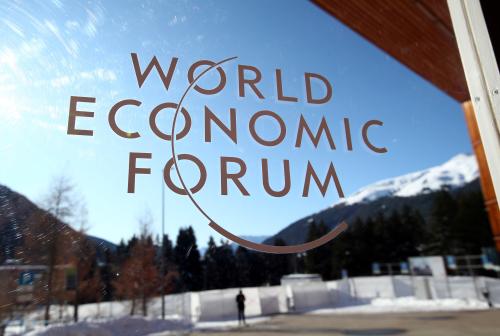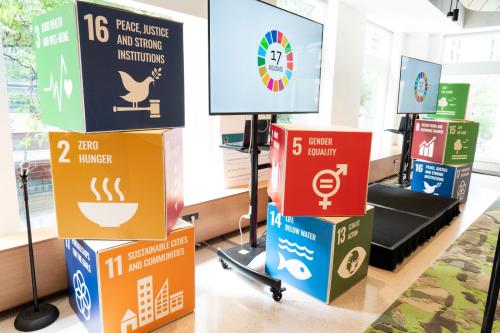On occasion, the Tech Tank blog covers climate and environmental issues, especially as maturing technology is integrated into related systems.
The recognition that carbon dioxide is not the sole contributor to climate change loomed large at the recent COP28 meetings in Dubai. A suite of short-lived climate pollutants, including methane, hydrofluorocarbons (HFCs), and nitrous oxides, pack formidable warming punches. These linger less than carbon dioxide in the atmosphere but front-load significant climate impacts. Collectively, they contribute to over 40% of current climate warming and therefore deserve in-depth attention.
Measurement precision for these contaminants continues to improve, engaging satellites, planes, and drones in moving toward more accurate inventories. This routinely reveals far higher releases of pollutants than official estimates, indicating greater climate threats than previously acknowledged. Technological advances in both measurement and mitigation suggest numerous ways in which future releases could be markedly reduced, delivering immediate climate benefits. All of this was on display in Dubai, with a dizzying number of summits, workshops, pledges, and declarations focused on these contaminants. The Biden administration estimates that “accelerated cuts” in these gases could avoid up to 0.5 degrees Celsius of warming by mid-century.
Nonetheless, the COP28 melodrama ended with a highly uneven set of domestic and global commitments to address these respective pollutants. Even for methane, responsible for about 30% of current global warming, fundamental political and policy differences remain depending on whether its source is oil, gas, coal, waste, or agriculture.
Hydrofluorocarbons
Rapid development and deployment of HFC alternatives for cooling sector transformation remain the climate policy gold standard. Sustained Kigali Amendment implementation builds on its formidable Montreal Protocol foundation for ozone-depleting substances alongside American legislation and treaty ratification with bipartisan support. This reflects a robust global initiative supporting rapid technological advancement with sequenced regulatory, pricing, and trade policy tools. These operate alongside a unique mechanism to fund global transition that includes sustained American participation.
COP28 unveiled a Global Cooling Pledge to extend Kigali’s reach beyond the chemicals used commonly in air conditioning and refrigeration into accelerating energy efficiency and affordability of emerging cooling equipment. Over 60 nations joined the new “Cool Coalition” during COP to advance this expanded cooling sector mission. More than four billion people currently lack adequate cooling system access and existing cooling already consumes one-fifth of global electricity, creating a unique opportunity for expanded impacts.
Energy sector methane
Fossil fuels contribute about 35% of human-generated methane globally and 40% domestically. The oil and gas sectors loom large politically and have emerged as the dominant focal point for domestic and global methane mitigation policy. Technological advances increasingly demonstrate that traditional measurement methods dramatically undercount actual methane losses, undermining industry claims that natural gas represents a climate-superior alternative to coal. A number of oil and gas producing nations are considering policies to minimize venting and flaring, mandate swift repair of leaks, employ low-emission production equipment, and establish more accurate and transparent disclosure systems.
During COP28, the U.S. unveiled a suite of new regulatory provisions and has since introduced plans for operating a legislated system establishing methane release fees on low-performing industries and upgrading emissions reporting. Europe has proposed bold methane reduction standards for the oil and gas that it produces and imports, raising the possibility of some form of methane border adjustment process through energy traded globally. More than four dozen major oil and gas producing firms, including some nationally held entities, embraced an Oil and Gas Decarbonization Charter at COP28, aiming to end routine flaring and achieve “near-zero” emissions by 2030, moving toward “net-zero” emissions by 2050.
Implementing these proposals in transparent and effective policy measures remains a significant challenge, however. The U.S. faces considerable technical, political, legal, and intergovernmental challenges to its plans to reduce oil and gas sector methane emissions by 80% by 2038. Evidence from Canada indicates that nearly a decade of serious methane regulatory reform does not necessarily resolve the problem of major emissions underestimation or uneven industry or provincial performance. Many energy-producing nations will require substantial technical and administrative support to begin to emulate proposed North American steps, although public, private, and philanthropic sources are pledging expanded funding support. The Global Methane Pledge system remains the primary form of international methane governance, largely symbolic and lacking robust policy components that make Kigali so effective. In turn, coal sector methane emissions continue to receive far less domestic and global policy attention than those from oil and gas, despite continued evidence that they also exceed reported levels and present severe risks.
Waste sector methane
Methane from solid waste landfills represents about 20% of human-generated releases globally and 15% domestically. In theory, these sources offer major opportunities for deep emission reductions. There are far fewer landfills than oil and gas drilling sites in the United States and most energy-producing nations. This concentrates the oversight process and creates major opportunities for use of similar types of measurement and monitoring technologies. Equipment to capture methane and use it as marketable gas exists and could be used earlier and more uniformly in landfill development. Prevention opportunities abound, including expanded recycling and reduction of food waste diverted to landfills.
Nonetheless, methane policy development for the waste sector languishes in contrast with oil and gas. Expanding measurement precision shows strong parallels with energy production, including chronic underestimation of releases and routine failures to address super-emitting sources. Americans waste approximately 40% of their food and food waste is responsible for 58% of landfill methane emissions. EPA regulations have not been updated since the mid-2010s and revisions have moved slowly during the Biden administration. Instead, a multi-agency initiative is drafting broad but non-binding policy goals.
The glacial pace of waste methane policy reform in the U.S. and many other nations reflects political reluctance to take steps that might increase near-term waste disposal costs or inconvenience households and businesses. A small suite of states, localities, and universities have launched efforts to limit the amount of food waste diverted to landfills, expand recycling and composting, increase anaerobic digester use to convert waste into usable gas, and thicken landfill cover to reduce methane losses. Some jurisdictions are exploring methane reduction strategies similar to those advancing in the energy sector, including mandatory gas capture, leak detection and repair programs, and requiring high-efficiency flaring technology. These square with global best practices but lack political and financial support for accelerated diffusion.
Agriculture sector methane and nitrous oxides
Agriculture and livestock represent major sources of short-lived climate pollutants, including production of about 40% of global and 30% of American methane releases. Major contributors include enteric fermentation linked to the digestive process of ruminant animals such as cattle, livestock manure, and rice cultivation. Add nitrous oxide emissions, a separate short-lived contaminant linked primarily to fertilizer use, and the agriculture sector rivals or surpasses the fossil fuel sector in short-lived climate pollutant impact in many nations.
Nonetheless, the politics in this sector remains precarious, reflected in very modest climate mitigation efforts. Current research has focused on animal feed alternatives, new ways to generate animal protein, and alternative tilling and manure management practices. In the United States and most other nations, agricultural methane or nitrous oxide policies principally involve experimentation and farmer subsidies to begin adjusting traditional practices. Agricultural sector use of advanced measurement or mitigation technologies remains quite limited and such policy tools as regulation or pricing largely remain off the table for fear of politically alienating food producers and consumers.
At COP28, U.S. Agriculture Secretary Tom Vilsack reiterated support for cattle feed experimentation and methane gas capture, dismissing any efforts to reduce production and consumption of beef and dairy. Senator Chuck Grassley (R-IA) said during the conclave that new regulations to require emission reductions would likely prompt farmers to “revolt.” This might mirror the combative response in the Netherlands following government efforts to reduce severe nitrogen pollution from its highly concentrated farm sector. The United Nations Food and Agriculture Organization updated its “roadmap” to guide sectoral emission reductions at COP28, but this remains very broad and unlikely to generate new national policies.
Short-lived climate pollutants collectively achieved unprecedented saliency at COP28, while actual policy development and performance continues to vary enormously by contaminant type and source. Accelerating advances in cooling and oil and gas sectors appears likely to continue to be offset by far more modest steps in the coal, waste, and agriculture sectors, with more robust policy engagement remaining a missed opportunity for achieving near-term climate protection.







Commentary
Addressing short-lived climate pollutants after COP28
January 23, 2024